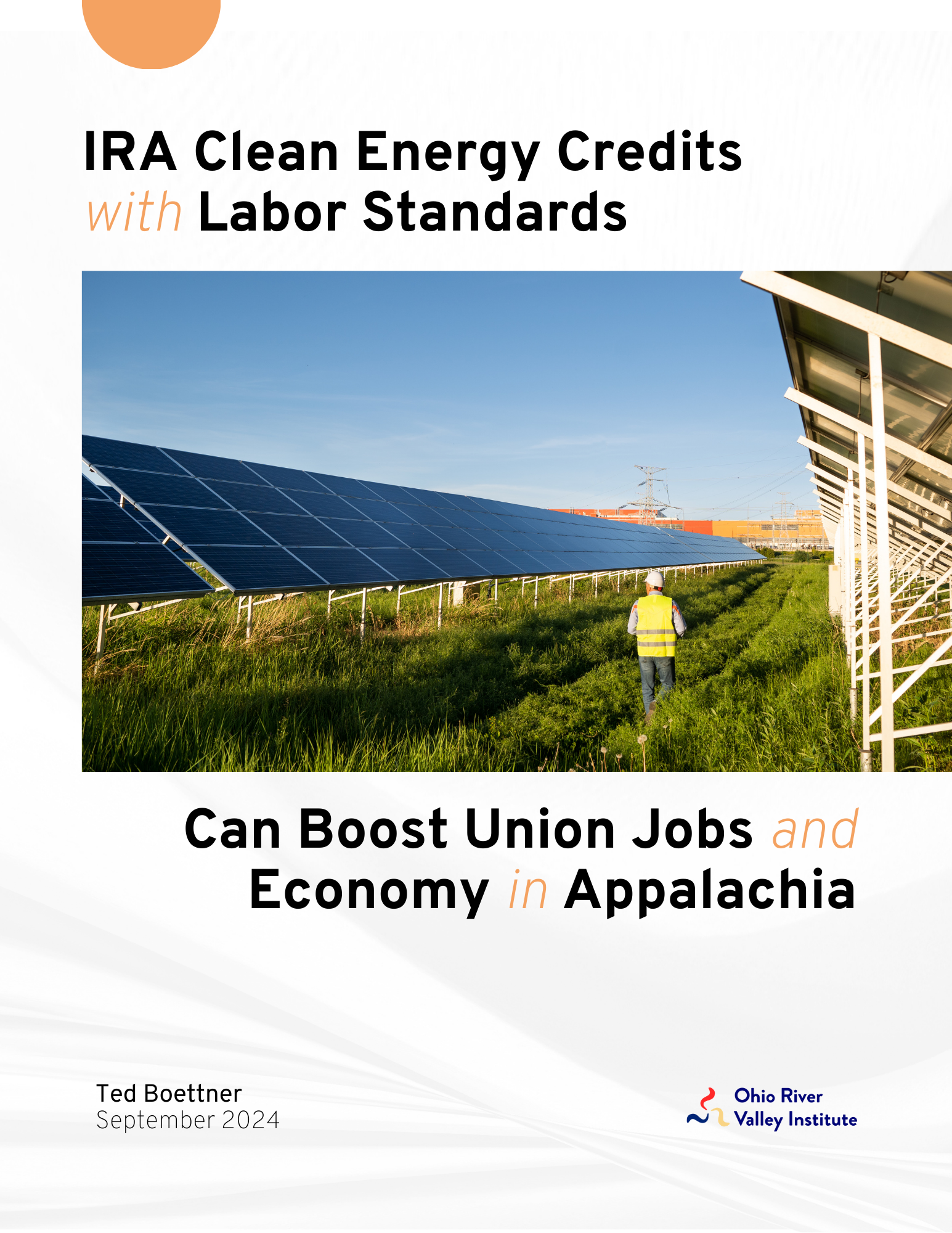Meeting prevailing wage and apprenticeship (PWA) requirements more than doubles tax benefits for clean energy projects funded by the Inflation Reduction Act (IRA) at little additional cost, and the requirements can boost productivity, strengthen workplace development, and spur local economic growth, new research shows.
The IRA’s generation-based Production Tax Credit (PTC) and the capital-based Investment Tax Credit (ITC), designed to fund clean electricity investments and production, account for more than a quarter of the program’s estimated $900 billion in anticipated expenditures by 2031. The 57 clean energy projects queued for construction in the Ohio River Valley could receive a combined $2.52 billion by meeting prevailing wage and apprenticeship requirements to secure the full rate, a sum more than double the $1.25 billion available through the credits’ base rate. The additional funding would more than offset the projected $774 million in incremental labor costs for all 57 projects.

“Meeting ‘high-road’ prevailing wage requirements more than pays off for clean energy developers seeking IRA tax credits,” explained report author Ted Boettner. “Developers can boost productivity, increase workplace safety, and accelerate project completion by using highly skilled, efficient union labor, all at a net negative cost. Workers win by receiving higher wages and better benefits. And communities win when union apprenticeships build career ladders to the middle class, increasing earnings and creating spillover effects that put more money into local economies.”
“It’s high time that developers realize that cheaper is not ‘best value’. We all have learned the hard way in life that cutting corners in a project creates more headache and hassle in the long run. To do a job right the first time, you need the right tools and the right training,” said Dana Kuhnline, Program Director for ReImagine Appalachia. “The same applies for major infrastructure projects. Fair wages and apprenticeship programs will help us build the workforce our region needs to tackle big projects like reclaiming abandoned mine lands, updating our roads and bridges, and building out clean energy infrastructure.”
The 76 clean energy projects eligible for the PTC or ITC across Kentucky, Ohio, Pennsylvania, West Virginia stand to create between 4,148 and 10,752 jobs and generate up to 6.2 million megawatt-hours of electricity annually, enough to power roughly 580,000 homes for a year.

